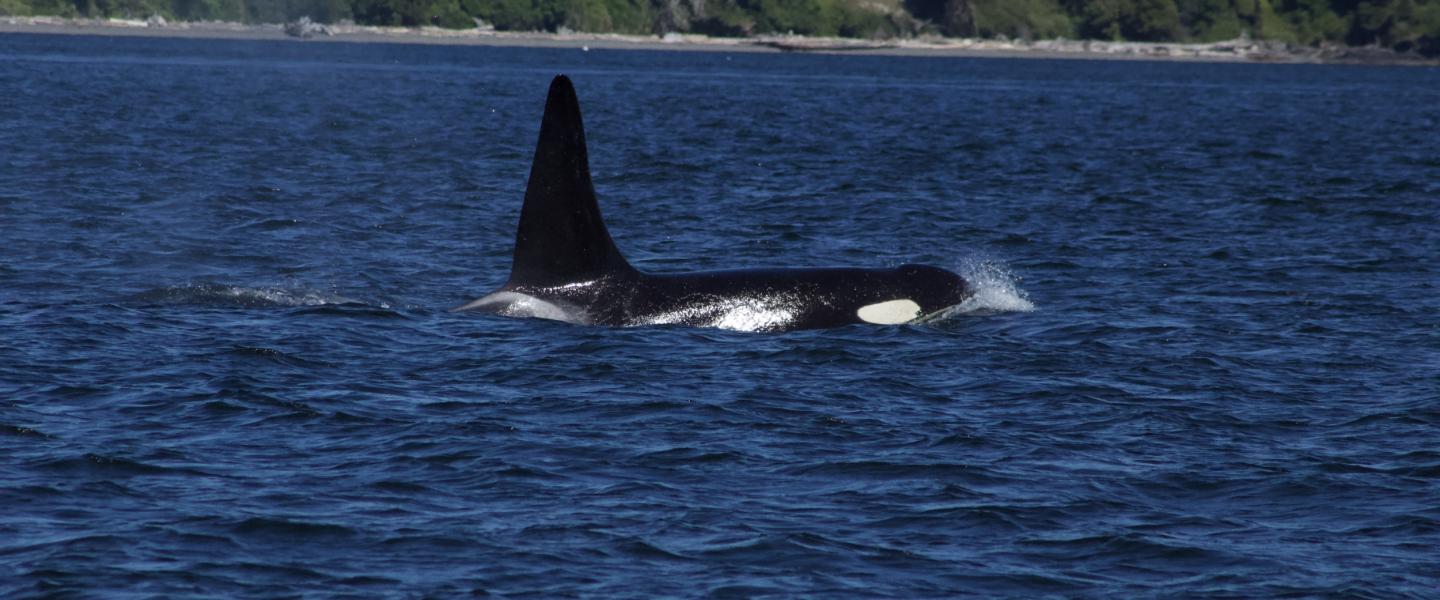
[Monday, 6/11/18 - M/V Kestrel - 2:00PM - Naturalist Erick]
Happy Monday Everyone! We hope your weekend was as good as ours, and it’s only going to get better this week! This Monday afternoon Captain Gabe and I took a super fun group of people out on a trip aboard M/V Kestrel. We started by heading north through San Juan Channel. We traveled around the northern side of San Juan and Henry Islands. Just as we rounded Henry Island we saw some blows in the distance around Kellett Bluffs. As we neared the bluffs we saw that it was a group of Orcas swimming south in Haro Strait. Once we got a few good looks it became apparent that these were part of Southern Resident Killer Whale Community. This is the population made up of 3 pods named J, K, & L pods. They are pure fish eaters and we often see them when large schools of salmon (especially Chinook Salmon) travel through on the way back to their natal streams. These three pods make up a unique, isolated community that now only numbers 76 mostly due to human actions. Since they are one of the most critically endangered species they have a lot of protections around them. When we saw them we were looking at part of L pod. L pod is the largest of the three pods and we were watching one of smaller family groups that makes up the pod. This group of large adult males and adult females continued on their way south close to the shoreline and as we looked ahead we could see several more orcas from L pod up ahead. We watched these massive animals travel effortlessly through the dynamic water but soon we had to leave them. We headed further south along the western shore of San Juan Island. As we neared the southern part of San Juan and Lopez Islands we saw some more blows and we soon could discern that this was another group of orcas! This family was busily socializing and eating when we arrived. This was a family of Bigg’s (formerly known as Transient Orcas). This is the other ecotype that spends a lot of time here in the Salish Sea. They have subtle differences in their looks, communication, social structures, and prey selection. These orcas don’t eat fish instead they prey on marine mammals, mostly Harbor Seals in our area. This family was the T37’s, The matriarch of this family has a pretty large fin, almost male-like, and she leads both some of her children and grandchildren around. This group played around letting the young ones roll on their faces as they slowly traveled towards Iceberg Point on Lopez Island. As they got closer and closer Captain Gabe noticed a blow in the distance right next to the Lopez Island shoreline. We kept looking and we eventually saw that it was a Humpback Whale! We watched both groups for awhile and eventually they passed one another as the T37 Orcas travelled east and the Humpback Whale traveled west. We followed the Humpback Whale for awhile as it traveled west and got a really got idea of how much bigger these baleen whales are when compared to the smaller orcas. As it traveled it would occasionally do deeper dives and fluke up its massive tail just before it went under letting a small waterfall fall off before plunging into the deep. We soon had to leave that whale, but we got one more stop on the way back to Friday Harbor. We stopped at Whale Rocks to see a bunch of Harbor Seals and Steller Sea Lions. These are both pinnipeds that live in the Salish Sea. The Harbor Seals spend their whole lives here and are around 300 lbs and the male Stellers are several times bigger than them! It was amazing to see all the Stellers growling and fighting on the rocks as we floated by. Soon they will all migrate north for their breeding season!
Whale folks that’s it for today
Naturalist Erick